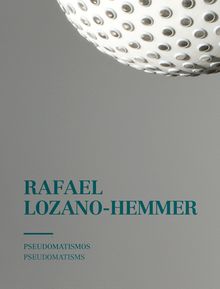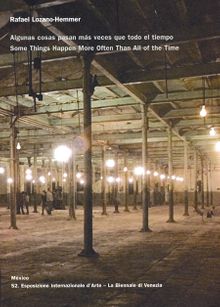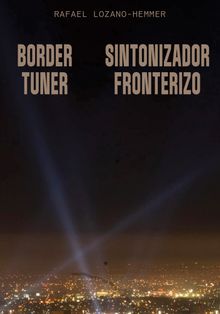| |||||||||||||||||||||||||
ARTIST MONOGRAPHS
|
|
STATUS: Forthcoming | 2/3/2026 This title is not yet published in the U.S. To pre-order or receive notice when the book is available, please email orders @ artbook.com |
 Rafael Lozano-Hemmer: Pseudomatism
Rafael Lozano-Hemmer: Pseudomatism
Published by RM/MUAC.
Text by José Luis Barrios, Kathleen Forde, Alejandra Labastida, et al.
PUBLISHER
RM/MUAC
BOOK FORMAT
Paperback, 6.5 x 8.75 in. / 256 pgs / 256 color.
PUBLISHING STATUS
Pub Date 12/1/2016
Out of print
DISTRIBUTION
D.A.P. Exclusive
Catalog: FALL 2016 p. 163
PRODUCT DETAILS
ISBN 9788416282463 FLAT40
List Price: $19.95 CAD $27.95
AVAILABILITY
Not available
STATUS: Out of print | 00/00/00 For assistance locating a copy, please see our list of recommended out of print specialists |
 Rafael Lozano-Hemmer: Some Things Happen More Often Than All of the Time
Rafael Lozano-Hemmer: Some Things Happen More Often Than All of the Time
Published by Turner/A&R Press.
Introduction by Patricia Espinosa, Sergio Vela, María Teresa Franco, Aimée Servitje, Viviana Kuri. Text by José Luis Barrios, Manuel DeLanda, Barbara London, Príamo Lozada, Cuauhtémoc Medina, Victor Stoichitas, Bárbara Perea.
PUBLISHER
Turner/A&R Press
BOOK FORMAT
Hardback, 7.5 x 10 in. / 176 pgs / 48 color / 9 bw.
PUBLISHING STATUS
Pub Date 12/15/2007
Out of print
DISTRIBUTION
D.A.P. Exclusive
Catalog: SPRING 2008 p. 145
PRODUCT DETAILS
ISBN 9788475067926 TRADE
List Price: $34.00 CAD $45.00
AVAILABILITY
Not available
STATUS: Out of print | 00/00/00 For assistance locating a copy, please see our list of recommended out of print specialists |
